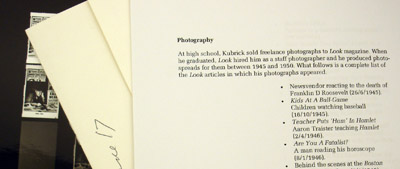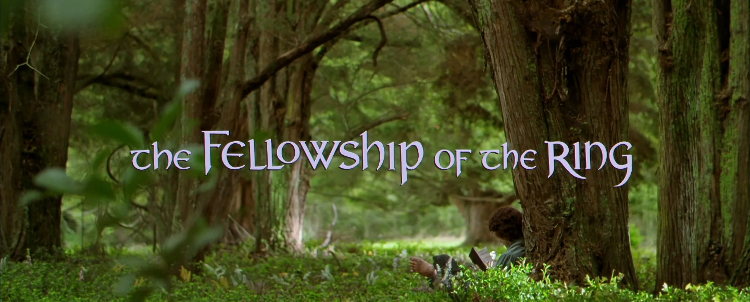Campbell had previously directed Pierce Brosnan as an ultra-suave Bond in GoldenEye. Brosnan's replacement, Daniel Craig, is more reminiscent of Die Hard's John McClain than the traditional James Bond character. (Does he want his Martini shaken or stirred? "Do I look like I give a damn?" is his iconoclastic answer.)
30 December 2007
Casino Royale
Campbell had previously directed Pierce Brosnan as an ultra-suave Bond in GoldenEye. Brosnan's replacement, Daniel Craig, is more reminiscent of Die Hard's John McClain than the traditional James Bond character. (Does he want his Martini shaken or stirred? "Do I look like I give a damn?" is his iconoclastic answer.)
24 December 2007
Adland:
A Global History of Advertising

Adland: A Global History of Advertising, by Mark Tungate, is the first truly historical and international book about the advertising industry. Its emphasis is on the industry rather than the advertisements themselves, though it explores the business of advertising with unprecedented scope.
Potty Fartwell & Knob
Thus, for example, we learn that there was a man named Jesus Christ who was born in 1940 and died in 2004. My favourite word is given its very own chapter, and the book lists twenty first names and surnames which incorporate it. (Anyone familiar with the English town Scunthorpe will get the general idea; as a personal nomenclature, it appears in even less disguised forms.)
In his introduction, Ash stresses that "wherever possible original documents have been checked" to avoid mistakes, though he also writes that his research involved "access to online material". Exactly how many census records he checked online, and how many he examined in their original versions, is unclear. I'm not convinced that all of the names listed are genuine, as it's too easy for mistakes or spoofs to creep in when records are typed into databases.
23 December 2007
New Works

New Works, an exhibition of videos and sculptures by Santiago Sierra, opened at the Lisson Gallery, London, on 30th November, and will close on 19th January 2008. The exhibition is accompanied by a catalogue, Seven Works.
New Works features twenty-one large blocks (Anthropometric Modules) of dried human excrement, collected and moulded by dalit (‘untouchable’) scavengers in India. Sierra’s art raises awareness of the exploitation of low-paid workers, though he has also been accused of exploiting the disadvantaged volunteers who work for him (by paying them nominal sums to perform degrading acts). Indeed, the Indian scavengers received no compensation for their work on his recent sculptures.
New Works features twenty-one large blocks (Anthropometric Modules) of dried human excrement, collected and moulded by dalit (‘untouchable’) scavengers in India. Sierra’s art raises awareness of the exploitation of low-paid workers, though he has also been accused of exploiting the disadvantaged volunteers who work for him (by paying them nominal sums to perform degrading acts). Indeed, the Indian scavengers received no compensation for their work on his recent sculptures.
21 December 2007
Stanley Kubrick Archive


The Stanley Kubrick Archive at the University of the Arts in London is currently being catalogued before opening to the public later this year. One of the boxes (catalogued as SK/1/2/29/2/9) contains a copy of my research into Kubrick’s Look magazine photographs, presumably printed out by a member of the Kubrick family or one of the director’s assistants.
Live Earth
17 December 2007
Seduced
Every significant field is included: Japanese illustrations from the 18th and 19th centuries, Victorian and early 20th century erotic photography from the Alfred Kinsey collection, outrageous drawings by Aubrey Beardsley, Surrealist images by Man Ray, illustrations for Justine and The Philosophy Of The Boudoir, and the Kama Sutra. There are even late drawings by Marcel Duchamp and Pablo Picasso, and an early (self-satisfied) Picasso self-portrait. Sex in contemporary art is represented by collections of photographs by Robert Mapplethorpe (his most sado-masochistic, homoerotic images), Nobuyoshi Araki (close-up, eroticised images of isolated organs and snails), Jeff Koons (quasi-pornographic self-portraits with Ilona Staller), Thomas Ruff (out-of-focus images appropriated from porn websites), and Nan Goldin.
Goldin's work, a slide-show of naturalistic images, is the only exhibit to carry an individual 'explicit content' warning, although the Kinsey slideshow is far more graphic; the Goldin warning may be a precautionary reaction to the fuss over her recent Baltic exhibition. There are very few notable omissions, though Warhol would have been better represented by Blue Movie, and Carolee Schneemann's film Fuses should have been included, as should Andres Serrano's History Of Sex photographs.
16 December 2007
30,000 Years Of Art
30,000 Years Of Art spans the entire history of artistic achievement, and features works from around the world. In addition to painting, sculpture, installation, and video, it also includes decorative art: ceramics, textiles, and metalwork. (In contrast, The Art Book is restricted to Western art since the Renaissance, and decorative art is excluded.) Unlike The Art Book, there are no cross-references but there is an index.
Each artist is restricted to a single entry. Some artists are represented by their most famous works, such as Velasquez (Las Meninas), Richard Hamilton (Just What Is It That Makes Today's Homes So Different, So Appealing?), and Picasso (Les Demoiselles d'Avignon), though others are not: Leonardo's first portrait (Ginevra de' Benci) is included instead of the Mona Lisa, and Michelangelo is represented by his Dying Slave sculpture rather than David or the Sistine Chapel ceiling.
30,000 Years Of Art, weighing almost 6kg with more than 1,000 pages, is an excellent introduction to international art history. The Story Of Art (by EH Gombrich; also published by Phaidon), A World History Of Art (by John Fleming and Hugh Honour), and Art Through The Ages (by Helen Gardner) are the best single-volume art histories.
10 December 2007
The Bridge
Documentary filmmaking has always raised questions about directorial intervention, though in this case the issue is absolutely fundamental. Steel maintains that, any time he saw someone behaving unusually, he called the coastguard, and that he was thus able to prevent six suicide attempts. One of the film's interviewees, a photographer, explains the detachment he feels when looking through a camera viewfinder, and this has also been explored in horror films such as Cannibal Holocaust and The Blair Witch Project. In The Bridge, the photographer overcame his artistic instinct and intervened to save the life of the suicidal woman he was photographing, and Steel himself is adamant that he did all he could for each of the people whose deaths he filmed.
07 December 2007
1001 Movies
You Must See Before You Die
05 December 2007
Adam & Ewald
03 December 2007
Destination Moon
While Pichel and Pal were perfecting their scrupulous accuracy, they were overtaken by a low-budget exploitation film, Rocketship XM, which was rushed into production and actually released before Destination Moon. Rocketship XM has no production values, but it's far more exciting than Pichel's film. Pal later produced the alien invasion film The War Of The Worlds, one of the most dramatic sci-fi films of the period, but it was the success of Destination Moon that revived the genre at the start of the 1950s.
The Lord of the Rings:
The Fellowship of the Ring

The Fellowship of the Ring is the first film in Peter Jackson’s trilogy The Lord of the Rings, based on the novels of J.R.R. Tolkien. The director’s cut is half an hour longer than the original theatrical version. The entire cast is suberb, especially Ian McKellen as Gandalf. It’s surprising that Orlando Bloom’s character has so little dialogue, though presumably his role is expanded in the second and third installments. Though there is extensive CGI, the film also relies heavily on traditional effects such as matte paintings and miniatures. Logistically, the trilogy is surely one of the most complex film projects ever undertaken, as the three films were produced simultaneously, with multiple units.


